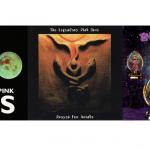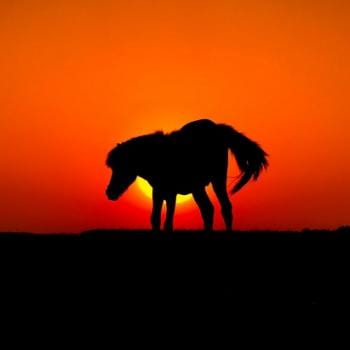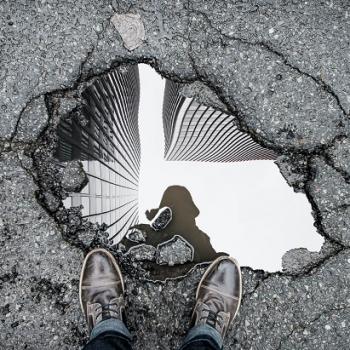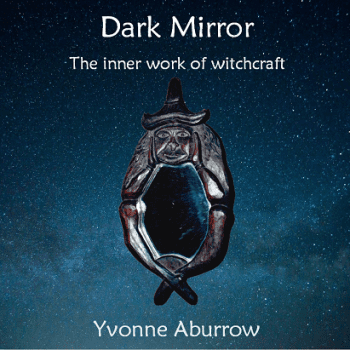Hello, beautiful creatures.
Previously on Outside the Charmed Circle, I ended on the shameless cliffhanger statement that witchcraft is queer, not only in the sense of being a non-normative spiritual praxis, but in the sense of being, y’know, the queer kind of queer. Today, I’d like to get into that statement a little, and see where it leads us.
A common objection to queerness within the confines of many Wiccan traditions—here defined to include any tradition of neo-Pagan witchcraft derived from the work of Gerald Gardner and Doreen Valiente—relates to the practice of sexual magic. Simply put, queer and trans witches don’t fit comfortably within the gendered sexual metaphors of cisgender, heteronormative witchcraft. The Great Rite of Wicca, wherein a priestess and priest have sexual intercourse whilst aspecting the Goddess and God of the Witches, is a beautiful rite in which the ecstatic, creative power of union is reified. However, it can fairly be said that this rite explicitly excludes people for whom such acts lack the spiritual content or sexual charge necessary to convey gnosis and transformation. The “symbolic” or “in-token” version of this rite, in which an athame or wand is inserted into a chalice of wine, can offer similar obstacles for queer and trans witches for whom the insertion of an “active” phallic symbol into a “receptive” vagina-analogue may be meaningless, or even emotionally harmful. Leaving aside the questionable visceral imagery of equating a penis to a knife, the gender essentialism at work in a metaphor based on the associational chains of penis = projector = male = active and vagina = vessel = female = passive should be fairly obvious.
There is, of course, an equally obvious rejoinder to all of this critique, one I’ve seen and heard numerous times: “If cisgender heterosexuality bothers queer people so much, then Wicca clearly isn’t the right path for them.” Interlocutors who express these ideas usually go on to point out that Wicca never claimed to be for everyone, and that there are plenty of spiritual paths which are perfectly welcoming to queer and trans people who find cisgender heterosexuality a less-than-optimal spiritual metaphor.
Well, that’s fair enough. There are few, if any, Pagan/polytheist spiritual paths which claim to have a lock on The Truth, and no one is “owed” initiation into anything. If cisgender heterosexuality were the defining spiritual and sexual mystery of Wicca, it would be pretty gauche to insist that Wiccan traditions should incorporate and honor other sexualities, other ways of being embodied and engendered.
The trouble is, cisgender heterosexuality isn’t the defining mystery of Wicca.

An Exegetical Ramble with the Mother of Modern Witchcraft
As I said earlier, the term “Wicca” covers a lot of traditions and practices, which makes it difficult to talk about “what Wiccans believe.” Even among those initiatory lines which fall under the “British traditional Wiccan” umbrella (Gardnerian, Alexandrian, and so on), there’s a lot of diversity in theology, practice, and text. If we expand the umbrella to cover any tradition which derives from Gardner and Valiente, that diversity expands exponentially.
So, let’s talk about the one text that every Wiccan (and a non-trivial number of non-Wiccan witches) should be able to agree is canonical: the Charge of the Goddess.
This liturgical piece, commonly (and reasonably) attributed1 to Doreen Valiente from an earlier piece assembled by Gardner, is one of a small handful of texts that basically everyone can agree is really, truly, inherently Wiccan. It has been read, declaimed, recited, or sung in private circles, public rituals, sainings, handfastings, requiems, interfaith services, and personal practices for well over half a century. It’s arguably the best-known piece of liturgical prose to emerge from the modern Pagan movement, and if you’re reading this, odds are good that you’re at least passingly familiar with it. It’s worth noting that the words of the text are attributed to “the Star Goddess, She in the dust of Whose feet are the hosts of heaven, Whose body encircleth the Universe.” They are, in short, the words of the Goddess of the Wicca Herself, making this the closest thing Wicca has to scripture or “holy writ.”
And right there in the text of the Charge is the following sentence:
Let My worship be within the heart that rejoiceth, for behold: all acts of love and pleasure are My rituals.
Now, there are a few ways we can approach this text. We can see it as a poetic bit of ritual furniture, adapted by Valiente from Gardner’s original assemblage to fill a necessary gap in the Gardnerian corpus. We can appreciate it as an inspired piece of liturgical poetry, one which crystallizes some of the essential theology and gnosis of Wicca into a stirring emotional declamation. We can revere it as an actual communication from the Goddess of the Witches. We can find elements of each of these, or of all three.
What I want to suggest here is that it doesn’t matter which of these approaches we take. What matters is whether or not we take these words seriously, as written2. The text itself doesn’t prevaricate: “all acts of love and pleasure are my rituals.” Taken as read, that’s pretty queer-friendly. It is, quite literally, all-encompassing. It doesn’t specify “all acts of heterosexual love and pleasure” as the only ritually-appropriate components of the worship of the Goddess.
Nor does it behoove us to assume that the speaker intended such a limitation.
If we assume for the sake of argument that Valiente is the ultimate author of the Charge, she is clearly allowed some latitude in the interpretation of her work, even absent her status as the “mother of modern witchcraft.” While she herself initially held to a heterosexist interpretation of the Wiccan magicosexual ethic, she later abjured this position quite decisively, as she writes in The Rebirth of Witchcraft: “Homosexuality, we were told, was abhorrent to the Goddess, and Her curse would fall upon people of the same sex who attempted to work together. For a long time I believe this; but today I question it. Why should people be ‘abhorrent to the Goddess’ for being born the way they are?” (p. 183). She goes on to call into question, not only the binary sexual nature of magical working in a Wiccan context, but the entire notion of the necessity of “male/female polarity” within witchcraft, either in theology or in practice: “What right have we to insist that people who were born with feelings different from ours shall be debarred from worshipping the most ancient powers of life?” (p. 185). For Valiente, “all acts of love and pleasure” would seem to include, well, all acts of love and pleasure, straight or queer.
If, on the other hand, we see the Charge of the Goddess as holy writ, as the literal words of the Star Goddess they claim to be, we must ask ourselves: are we really going to suggest that the Goddess of the Witches—Who has been with us from the beginning, and Who is that which is attained at the end of desire—didn’t know perfectly well what the word “all” meant when She used it?
As ever, more thoughts along these lines soon. Until then, dear ones, stay safe. ♥
- A full accounting of the history of this liturgical piece is beyond the scope of this blog post… and besides, it’s been done already, to delightfully exhaustive detail.
- For English speakers at least, there are no questions of translation error or shifts in syntax over time; the final version of the Charge dates no later than the 1950s.
















